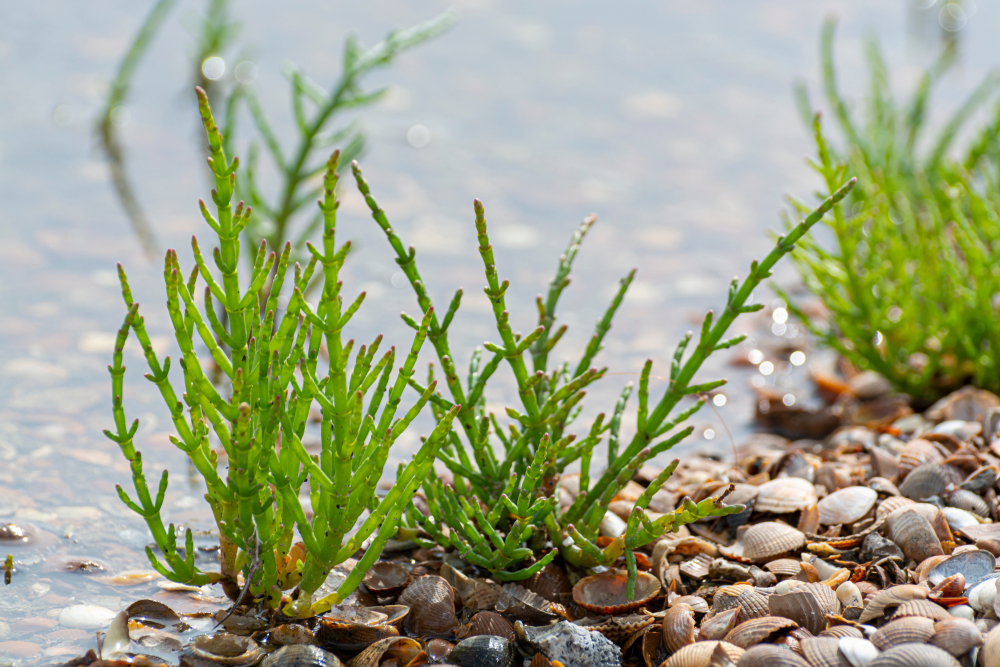Question: During my visit at a fish market in a coastal town, I saw that apart from fish and other seafood, they were selling seaweed called samphire. I tried it, and the taste is very interesting. What are the nutritional benefits?
Answer:
I’m so glad you asked—samphire is one of those coastal treasures that often goes unnoticed, yet it’s packed with flavour and surprisingly good for you. With its crisp texture and naturally salty taste, samphire (sometimes known as Salicornia or “sea asparagus”) is not actually a seaweed but a succulent plant that thrives in salt marshes and tidal areas. Traditionally foraged by coastal communities, it’s gaining popularity for both its culinary potential and its nutritional profile.
 🌿 Nutritional Benefits of Samphire
🌿 Nutritional Benefits of Samphire
- A natural source of iodine
Samphire contains iodine, a mineral essential for the proper function of the thyroid gland. The thyroid regulates metabolism, energy levels, and even mood. As Professor Margaret Rayman, an expert in nutritional medicine at the University of Surrey, explains:
“Iodine deficiency is still a problem in some parts of Europe, especially for women. Sea vegetables and coastal plants like samphire can provide a valuable natural source of iodine in the diet.”
If you don’t eat much seafood or dairy (both common sources of iodine), adding samphire occasionally could help fill that gap.
- Loaded with minerals from the sea
Thanks to the environment in which it grows, samphire is also rich in:
- Magnesium – supports muscle and nerve function, and helps regulate blood pressure.
- Iron – important for oxygen transport and energy production.
- Calcium – essential for bone strength and cellular function.
- Zinc – contributes to immune defence and wound healing.
- Naturally low in calories
A 100-gram serving of raw samphire contains approximately 45 kcal, making it an excellent choice for those watching their weight without compromising on taste or texture. - Contains antioxidants and polyphenols
Preliminary studies have shown that Salicornia species contain beneficial polyphenols and flavonoids with antioxidant properties, which help reduce inflammation and protect cells from oxidative stress. A study published in Marine Drugs (2016) highlights the potential anti-inflammatory and anti-diabetic effects of Salicornia extracts, although further human research is needed. - Supports gut health
Samphire is a source of dietary fibre, which promotes a healthy gut microbiome, supports digestion, and may help regulate cholesterol levels.
⚠️ A Word on Salt
Because of its natural habitat, samphire absorbs salt from its surroundings. It tastes quite salty even without any added seasoning, and this also means it’s relatively high in sodium. If you’re on a sodium-restricted diet, it’s best to enjoy it in small portions and avoid salting it during cooking. A quick blanch in boiling water can also help reduce its saltiness without stripping away its nutrients.
🍴 How to Use Samphire in the Kitchen
Samphire pairs wonderfully with seafood—it brings out the oceanic flavours while adding a satisfying crunch. But its uses don’t stop there. You can:
- Sauté it lightly with garlic and olive oil,
- Toss it into a salad for a salty bite,
- Add it to scrambled eggs or omelettes,
- Mix it into pasta with lemon zest and capers.
Just remember: samphire is best enjoyed lightly cooked. Overcooking it can make it mushy and overly salty.

In short, samphire is a delicious, nutrient-dense coastal vegetable that offers both culinary excitement and health benefits. It’s a lovely way to add variety to your meals, especially if you’re looking for more plant-based sources of essential minerals.
Have a question about food, health, or nutrition?
Ask Nika – I’m here to help you make informed, delicious choices every day.
